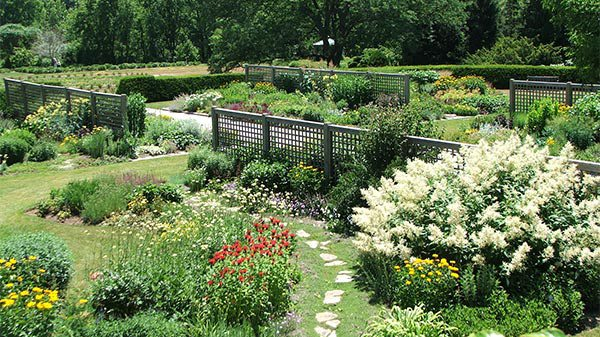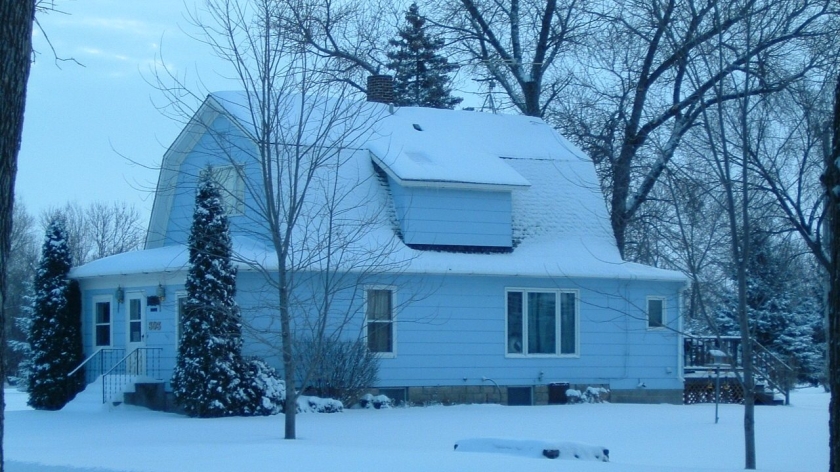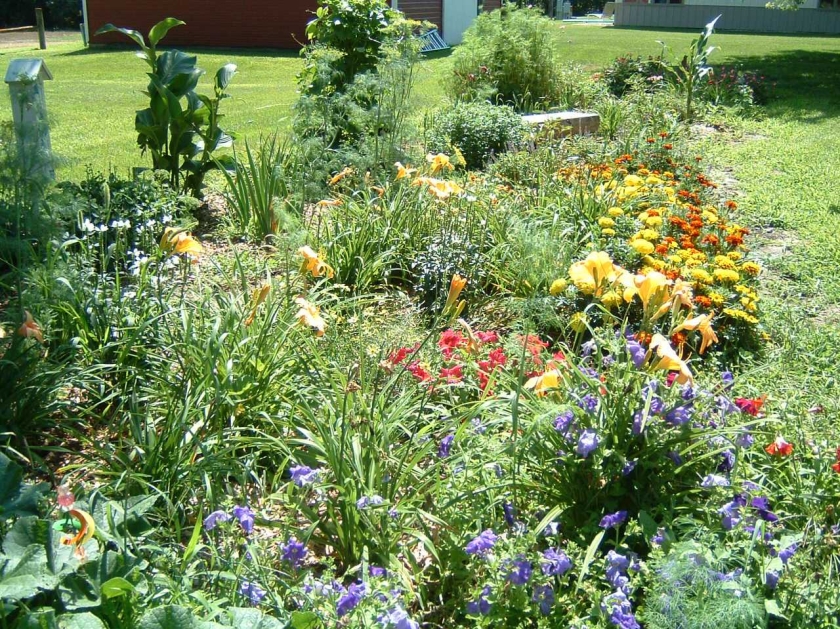As I sit at my desk, watching the snow come down during our first blizzard, I am daydreaming of spring planting. On my desk, gardening books and catalogs lay open to designs I love and plants I would like to have. Graph paper and color pencils are patiently waiting as ideas begin to form. If you are like me, when one growing season ends, it’s time to start planning the next.
I love design. I love planning for new flower beds and borders. I also love to redesign old gardens with new walkways, trellises, or arbors along with flowers. Fences can also add to the landscape by separating large gardens into smaller spaces.

After settling on the new hardscape (walkways, retaining walls, etc.), it’s time to delve into the joy of picking out the new plantings. It’s fun to pick out new perennials such as roses, delphiniums, peonies, and lilies but don’t forget to include decorative trees, like birch and canadian cherry, and shrubs, like viburnum and lilac. Mixing flowers in with trees and shrubs gives your new garden the thoughtful balanced look every designer craves. This is where planning is really important.

Adding trees and shrubs to the new landscaping will create a vision of beauty in your garden, however, there are some things to consider when doing so. Trees and shrubs are more permanent parts of the landscape than annual and perennial flowers. Annual flowers must be replanted ever year and most perennial flowers that come up every year can be easily moved. This is not the case with trees and shrubs. It is important to take into consideration how large a tree or shrub will get at maturity, how long it takes to reach maturity, and the plant’s long term needs. For example, a small white pine tree may look elegant in the landscaping next to a red brick home but within a few short years it will outgrow the space and it will need to be removed. A better option for such a space would be to plant an aborvaete or juniper that grows vertically and slender. This will still give the homeowner the elegant evergreen appearance and the plant will be able to thrive in that space for many years to come.
Color and bloom time for each plant is also a consideration when planning a new garden or landscape. Some plants, like hostas and coral bells, are grown strickly for their foliage texture and color. However, plants like peonies and lilacs, which are grown for their showy colorful blooms, have a definite bloom time. It is important to plan around the bloom time of each plant to allow your garden to have consistent bloom coverage for the entire growing season. To get the most from your garden, plant a mix of flowers and shrubs in the colors you like that start blooming in early spring, like tulips and forsythia, with summer bloomimg plants, like coneflowers and viburnum, and fall blooming plants, like mums and asters. Then, to make sure there is no time your garden color falls flat, add in some annuals for all season color and a show-stopping look.

Planning your new garden or redesigning an old one is fun way to stay in the gardening spirit even when the snow is falling outside. And, creating a good plan ahead of time will give you a beautiful garden or landscape that is colorful and inviting all season long!
Happy gardening!
Quote of the Day
A black cat among roses, phlox, lilac-misted under a quarter moon, the sweet smells of heliotrope and night-scented stock. The garden is very still. It is dazed with moonlight, contented with perfume…
― Amy Lowell, American poet


Is that spiderwort in the foreground of the last picture? Someone else just posted pictures of spiderwort, and it really showed why some people like it. I never see it looking like that. I don’t know why, but it does not seem to bloom so much.
LikeLike
Thank you for your comments. Spiderwort is a unique and beautiful plant. I encourage you to try growing it, but, I believe the flower you are referencing in the picture is a lavender petunia. It was a hot day when I took this picture and if I remember correctly, the petunias were slightly wilted.
LikeLiked by 2 people
Oh, how embarrassing. I do not often misidentify plants.
Spiderwort started growing at the farm as a weed that came in some material that a landscaper dropped off. I did not know what it was until my colleague told me about it. Once he told me that it was popular during the Victorian period, I sort of liked it . . . but as it grew into a mass of grassy foliage with minimal bloom, I started to question the appeal. The air is to arid for it (I think). The flowers are not very abundant, and then once they bloom, they shrivel pretty quick.
LikeLike
I too am planning quite the undertaking. If I understand right, certain flowers and herbs are beneficial to a vegetable garden? Do you know if these certain flowers must be in the veggie garden itself……. or can share the yard and be fine?
LikeLike
Most herbs and some flowers work well to deter pest from the garden. A really great flower to plant in the garden to deter pests is the marigold which can be grown easily from seed. Chrysanthemums also work really well because the plants contain pyrethrum which is the active ingredient in many organic insecticides. Herbs of all kinds, like lavender, rosemary, and basil, will deter insects like aphids and mammals like rabbits and squirrels. These pests do not like the smell or taste of herbs. It works best if you plant the flowers and herbs in your garden, either as a border around the entire vegetable garden to keep pests out or planted along with your vegetables to confuse pests. Good luck with your new garden!
LikeLiked by 1 person